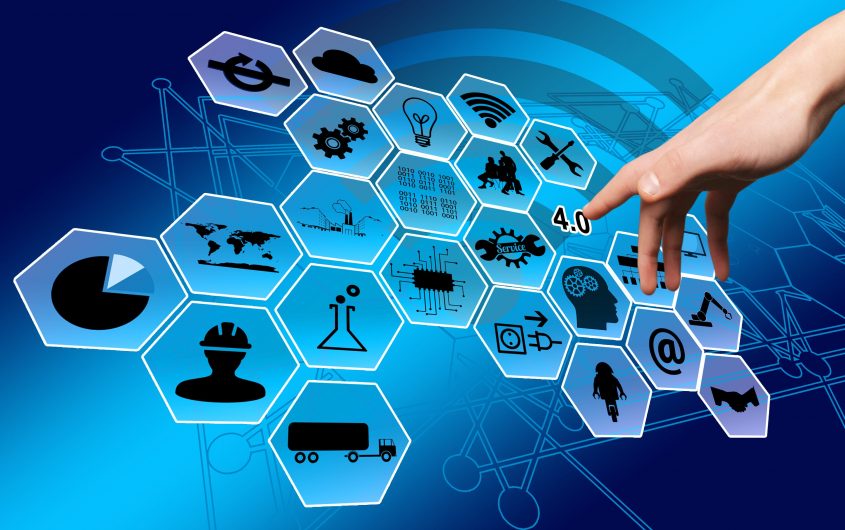
A Tale of Two Futures: The Future of Work Debate in Germany and the U.S.

Ines Wagner
Norwegian Institute for Social Research
Ines Wagner is Research Professor at the Institute for Social Research in Oslo, Norway. Her research focuses on equal pay for work of equal value, the double mobility of capital and labour in the European single market, and technological change and the quality of work. She has held fellowships at the American Institute for Contemporary German Studies at Johns Hopkins in Washington, the Max Planck Institute for the Study of Societies in Cologne, and the European University Institute in Florence. Professor Wagner has published with, amongst others, Cornell University Press and in popular media outlets such as The Guardian and Harvard Business Review.
The future of work is, in many respects, now. Digital technologies are driving enormous change processes in the economy and society with impacts reaching far beyond Silicon Valley, stretching even to companies in Ulm, Ludwigsburg, and Unterföhring. Some industries, like retail, have been revolutionized by technological innovation. In other sectors, digitalization is just beginning. Eventually, all economic sectors will undergo a digital transformation process. What remains to be seen is exactly how this digitalization will change work environments. How will we work tomorrow? Academics and policymakers alike grapple with this question, sketching out hypothetical scenarios where future technologies redefine the value of skills and available work.[1] So far, companies, policymakers, trade unions, stakeholders in society, and, of course, workers themselves have difficulty grasping the extent and nature of this transition. That difficulty is exacerbated by the speed with which new technologies are being developed, introduced, tried out, and re-developed or discarded. We are also witnessing the onset of 5G network capability, which is likely to transform not only how we communicate, but also how we will organize work.
These processes and transformations are omnipresent in both the United States and Germany. However, the relationship between digitalization and changes in work environments is being problematized differently in the two countries. In the United States, the focus is more on the nature of technological change, with emphasis on innovation; business insiders, or networks of labor representatives, are the main players, resulting in limited cross-fertilization of viewpoints. In Germany, the debate is centered strongly on Industry 4.0 (in which industry is the main focus) and how it will competitively advantage the German economy. But there is also discussion of Work 4.0 (in which the work environment and employment relations are the main focus), which is driven by the Ministry of Labor and Social Affairs, and labor and employer representatives, that approaches problems multilaterally to solve problems that confront employers and employees alike. The distinction in this debate is important because the framing of economic and societal problems conditions policy solutions.
Background
Germany and the United States share a similar trajectory of technological development. The current debate on the future of work is taking shape in the context of innovations in microelectronics, information and communication technology, automation, and universal networking software. Digitalization and networking alter the form and content of work through new processes and value chains. There are also major changes underway in the development of novel digital products (smart products), new data-centric business lines (smart services), and new companies conquering current markets and establishing new market models.[2] Developments in human work will depend on the implementation of these technological advances. How will human work be valued as a productive factor going forward?[3] Both control of the interface between man and machine and, for example, the benefit provided by assistance systems must be weighed together in evaluating societal impact. Essentially, the matter boils down to whether humans or machines will dictate our relationship with work in the future.
As early as the 1970s, the advent of computer-aided design systems and the subsequent computer-aided manufacturing systems was paving the way for computerization in industry. Initially, the focus was the integration of technology in development, planning, and production. IT infrastructure gradually became the basis for so-called “supply chain management strategies,” which integrate the entire value chain from customer to supplier (CIM concepts or Computer Integrated Manufacturing).[4]
Today, production assets, processes, and products can be digitally aggregated across platforms; development, planning, manufacturing, and enterprise logistics can be linked through real-time data in the cloud. Sensor technology collects information about work and products. Embedded system and control software evaluate productivity via standardized online interfaces in so-called cyber-physical systems (CPS) and communicate results via display technologies (such as data glasses) on site in a direct application context. In the automotive industry, virtual reality glasses are used for training and production. Data analysis, using defined software algorithms, lays the foundation for flexibility and short-term adaptation of production and service provision, bringing customers over to the producer side. In addition, companies are increasingly being networked. Data usage can enhance or reconfigure value creation.[5] At the heart of the flexible work process is the autonomous control of value creation processes over a product’s life cycle.
Opportunities and Risks
The consequences of a changing industrial and service work environment are difficult to estimate. Automation is most likely to take on human work in highly structured, standardized, and predictable environments.
In Germany, Dauth et al. find that each robot destroys two manufacturing jobs, but aggregate employment is left unchanged.[6] Furthermore, labor productivity rises, though wages are not affected. Not all jobs are at risk, however, of being automated—Arntz et al. estimate that only 9 to 10 percent of jobs in the UK and United States were “automatable” through “automatization and digitalization.”[7] While these are predictions of possible future scenarios, in terms of scale, it is easier to observe the impact of automation on the quality of work. Some such predictions are as follows:
- Rebalanced distribution of work between people and technical systems;
- Increasingly data-centric business models and innovations;
- More specific and nonlocal work processes, with work divided into global networks;
- More flexible employment, with work assignments replacing working conditions;
- Changes in the value of accumulated knowledge;
- Changing demands and a growing need for diversified skills.
In general, it can be stated that positions requiring rather low qualifications, across the worldwide network of production and services, appear particularly threatened.
The Role of the Human or Human Work in Industry 4.0
The future role of employees in digitally-networked work where workers interact with technical interfaces depends crucially on the evolution of qualifications. One scenario predicts a polarization of tasks and qualifications, in which middle levels of qualification erode and other qualifications will increase across those remaining employee groups. These are, for example, highly qualified activities (e.g., skilled software and engineering experts) as well as non-routine but simple activities (e.g., low-skilled positions with simple job requirements that nonetheless require a human operator). The alternative scenario focuses more on a potential revolution of qualifications, wherein new hitherto unknown skills become necessary as old skills are automated.
If the classic image of a sovereign, skilled worker is one who knows his or her working methods and knows the tools to be adequately used in connection with the material, today the key characteristics are that he or she holds the knowledge of current standardization and automation processes, and is a flexible-routine worker with continuously updated skilled worker qualification.
Entirely new job profiles will become necessary in the course of computerization; these positions will be responsible for decision-making in the context of standardized and automated processes. The functionality of assistance systems or the design of the man-machine interface will require more system-understanding, social skills, and personal skills in the future. Qualifications that branch across disciplines will be required. However, recent studies see the dual-occupational model in Germany as an educational system or skills system, as a critical conduit between skill levels, and as a key resource in meeting innovation in the workplace.[8]
Industry 4.0 and the Discourse of Work 4.0
The quality of human-machine interaction (for example, the use of data glasses or sensor gloves and the use of so-called smart devices) facilitates employee intervention in machine and network data. When interactions are of high quality, the employees produce more timely, quality information about the relevant processes. At the same time, different processing sequences can be associated with it and factory utilization can be optimized automatically. The latter helps to relieve routine activities. This increases the scope for design in the work, as well as the demands on the subjective work capacity of the employees. This combination marks a hybrid high-skilled modern industrial work of the future.[9]
Trade unions in Germany push the idea of “good work”; together with the Ministry of Labor and Social Affairs, they have developed policy proposals and a discourse around the idea of “Work 4.0” with the goal of inducing a discursive shift with a focus on work instead of industry. The guiding principle of “good work” is based on the highest personal rights and a definition by the World Health Organization (WHO), which formulates the state of “complete physical, mental, and social well-being” of the human being as the fundamental intention of the work organization.[10]
Related to this in the digital world of work are further questions about the risks that affect the complexity between work and other areas of a society: Will precarious employment become normal? What are the consequences of permanent change and possible long-term stress on people and their time for self, family, and social life? How is competition for social standards developing? With regard to Work 4.0, the topics that can affect the bottom line are of equal importance for society as a whole: “participation in work,” “good corporate culture,” “democratic participation,” “life-phase oriented employment and social policy,” “fair wage” and “good pay,” “social security,” as well as “getting good work in digital transformation.”[11] For trade unions in Germany, key players in the labor market, this also means contemplating structural changes that ensure employee safety, fair wages, collective bargaining, pay equity and self-determination, and participation in work design and working hours.
A waypoint, as proposed by the German trade union movement, is a focus on the fields of action which form the building blocks for a humane working world, or, put differently, a working world where humans are at the center:
- Digitalization requires new forms of participation, and regulation in the face of increased flexibility;
- Effective workers’ rights to limit power and control in the context of big data;
- Education and training as the key to social change and social justice;
- Development and expansion of occupational health and safety;
- Modern working-time policy and collective bargaining as cornerstones of the welfare state;
- Active industrial policy and a welfare state 4.0 that is safe, fair, and self-determined.
These comprehensive requirements of flexibilization, individualization, dynamization, and globalization require holistic approaches on the one hand and tailor-made solutions for the lifelong career of a worker on the other.
Challenges
The evolution of work requires companies to be particularly agile in dealing with complexity and the solutions for many problems remain unclear. Workers’ representation organizations, unions, and social movements demand an innovative competence wherein employees’ need for security, justice, and self-determination play a role in shaping work itself.
But developments show that a field of design (such as qualification and education) can quickly become a field of tension: While interdisciplinary, complex activities are increasing on the job, technically-replaceable, standardize-able jobs with simple qualifications are decreasing. Moreover, tasks that are routine, physically demanding, or highly precise are being automated; the requirements with regard to planning and monitoring activities—oversight roles—are increasing. Studies diverge on the details and dimensions, but they agree this shift is occurring. As computer-based machines turn complex processes into highly-complex systems with steep learning curves, the actual oversight of these processes is increasingly unnecessary, as is the situational awareness for the overall process.
Supported by the DAAD with funds from the Federal Foreign Office (FF).
[1] See for example, Carl Benedikt Frey and Michael A. Osborne, “The future of employment: How susceptible are jobs to computerisation?” Technological Forecasting and Social Change, 114, Issue C (January 2017), 254-280.
[2] Ernst Tiemeyer, “Digitale Transformation,” Computer und Arbeit 12/2016, pp. 25.
[3] J. Hofmann and C. Kurz, “Industrie 4.0 – Industriearbeit der Zukunft im digitalen Wandel,” in Gute Arbeit, Digitale Arbeitswelt: Trends und Anforderungen, ed. L. Schröder and H.-J. Urban (Frankfut am Main: Bund-Verlag, 2016), p. 79.
[4] Manfred Burr, “Der Weg in die digitale Fabrik von Morgen,” Computer und Arbeit 12/2016, pp 14.
[5] L. Schröder and H.-J. Urban, ed., Gute Arbeit, Digitale Arbeitswelt: Trends und Anforderungen (Frankfut am Main: Bund-Verlag, 2016), p. 5 ff.
[6] W. Dauth, S. Findeisen, J. Suedekum, and N. Woessner, “German Robots – The impact of Industrial Robots on Workers,” Paper presented at EEA-ESEM 2018 (IAB DP 30/2017).
[7] M. Arntz, T. Gregory, and U. Zierahn, “The Risk of Automation for Jobs in the OECD,” OECD Working Paper No. 189 (2016).
[8] Thomas Haipter, Interessenvertretung in der Industrie 4.0 (Baden-Baden: Nomos Verlag, 2019).
[9] J. Hofmann and C. Kurz, “Industrie 4.0 – Industriearbeit der Zukunft im digitalen Wandel,” in Gute Arbeit, Digitale Arbeitswelt: Trends und Anforderungen, ed. L. Schröder and H.-J. Urban (Frankfut am Main: Bund-Verlag, 2016), p. 77.
[10] WHO constitution from 1946. Accessed online: http://apps.who.int/gb/bd/PDF/bd47/EN/constitution-en.pdf?ua=1
[11] Thomas Haipter, Interessenvertretung in der Industrie 4.0 (Baden-Baden: Nomos Verlag, 2019).









